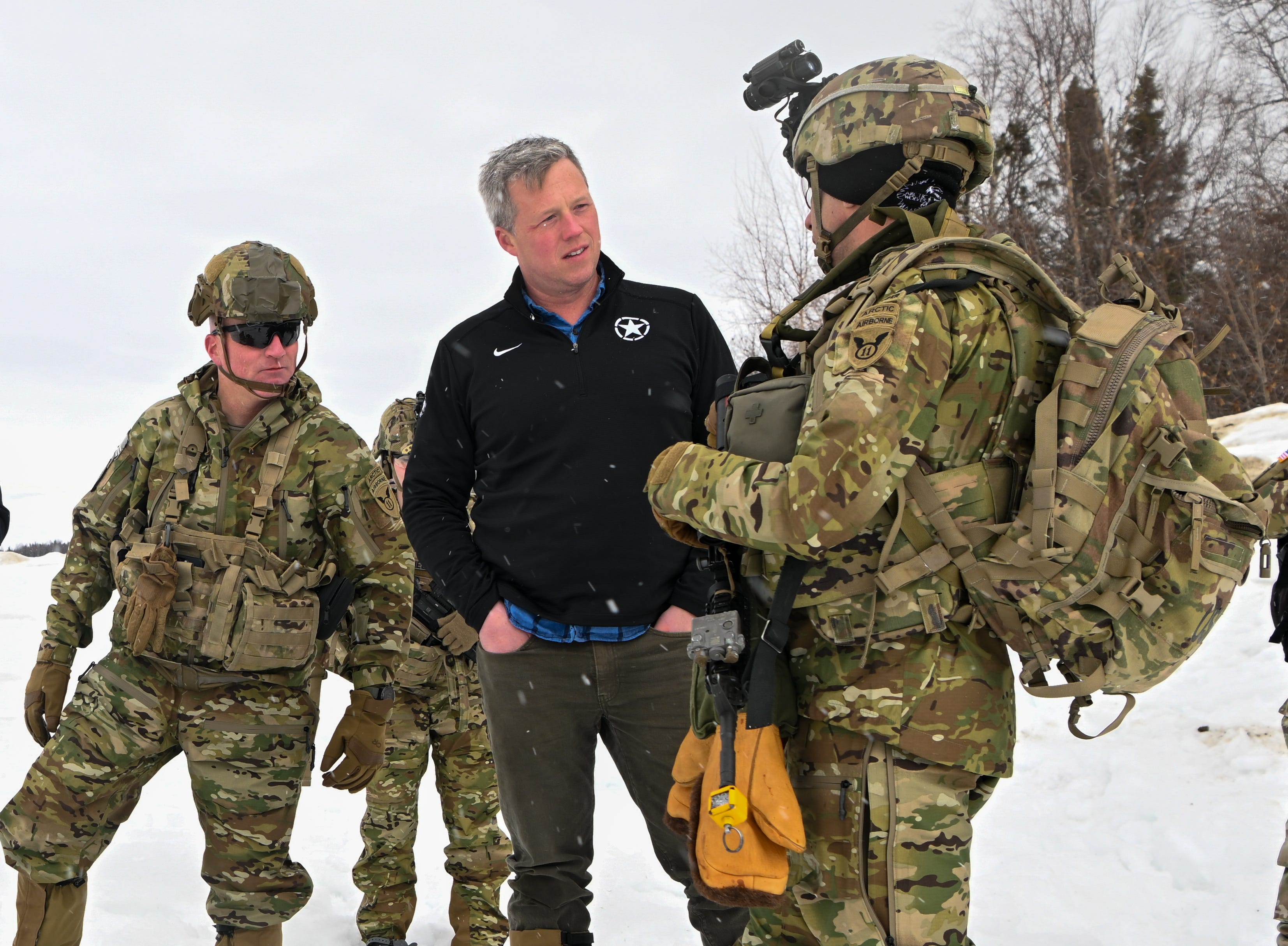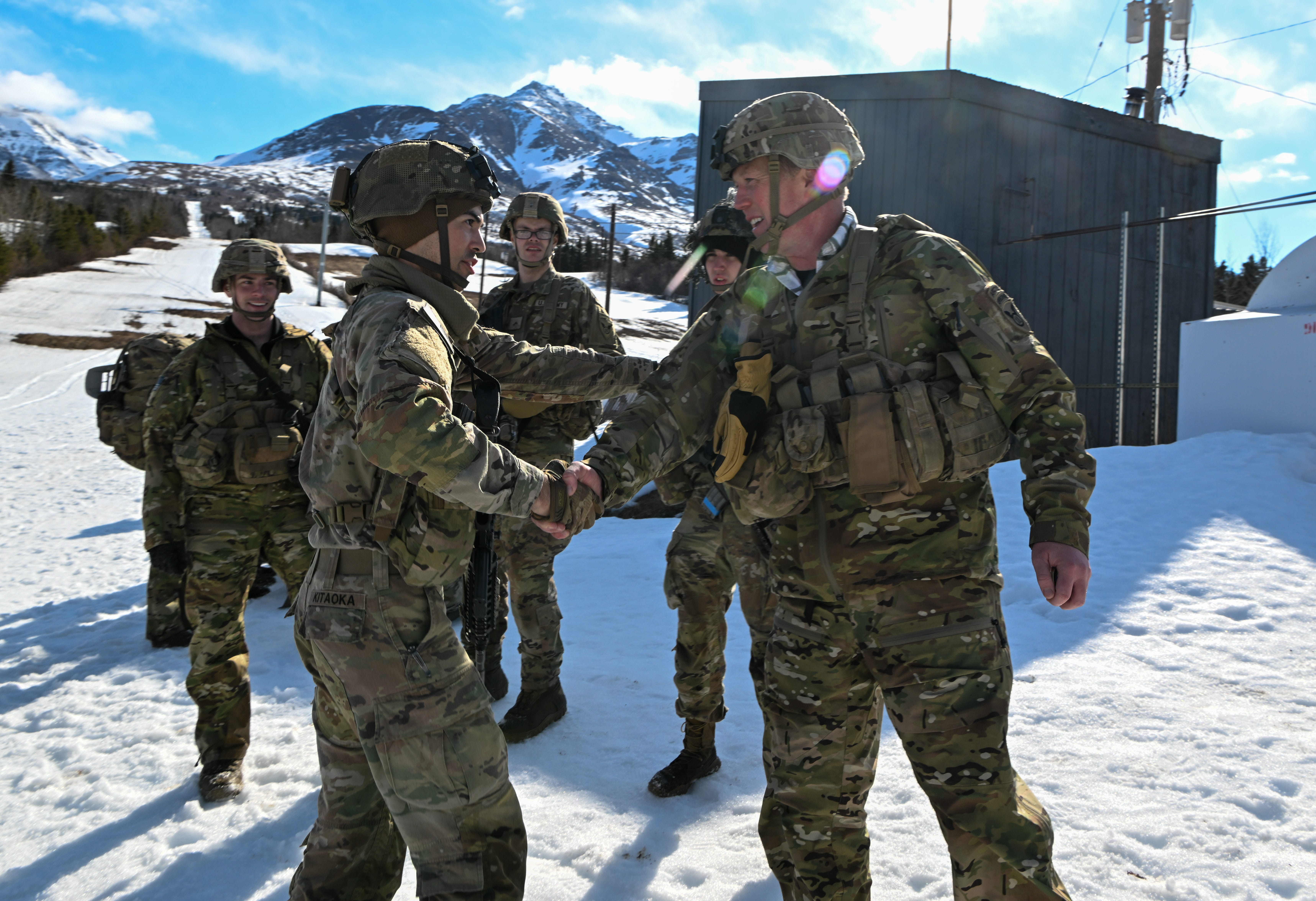
US Army photo by Sgt. 1st Class Nicole Mejia
Daniel Driscoll is only two months into his new job as the 26th Army secretary, but the 38-year-old former armor officer and Iraq War veteran knows what he wants: lethality.
Anything in the US Army that doesn’t advance that goal could be out, he told Business Insider on a call this week. That could mean changes from training to force structure, even the tossing out of legacy systems, his staff said.
Lethality is a guiding light for the Department of Defense under Secretary of Defense Pete Hegseth. It was also a core objective — and talking point — in the earlier Trump and Biden administrations, though with different interpretations. The subjective measuring stick is what programs are being evaluated against.
“What has occurred is a hollowing out of a lot of the tools that we have given our soldiers,” Driscoll, formerly an officer with the Army’s 10th Mountain Division, told BI during his official visit to Alaska this week to observe the 11th Airborne Division.
Decision-makers in DC “have optimized for nearly everything other than the soldier in their decision-making,” he said, arguing that the acquisition process for new capabilities and programs needs an overhaul and that the individual soldier’s ability to effectively engage the enemy has to be at the forefront of every decision.
That push may force a reassessment of the US Army’s older systems that may be vulnerable in a future fight.
Driscoll suggested cutting down training requirements for soldiers “to return to the core of things that they need to do to be good at their jobs,” removing excess or unnecessary elements. “If it doesn’t directly correlate with lethality, we’re getting rid of it,” he said.

US Army photo by Sgt. 1st Class Nicole Mejia
From the military’s perspective, lethality is essentially about the ability to engage an enemy and effectively put ordnance down range to deadly effect, but what is considered necessary to build a force capable of doing that varies.
What is lethality?
During President Donald Trump’s first term in office, then-Defense Secretary James Mattis, a retired Marine Corps general, made building a more lethal fighting force a Pentagon priority. Lethality was also a common topic under the Biden administration, though the current administration has accused its predecessors of focusing too much on superfluous agendas.
Lethality is a go-to buzzword in the Pentagon lexicon and for longstanding Army programs. Project Manager Soldier Lethality, for instance, develops next-generation rifles and machine guns for soldiers. A cross-functional team of the same name designs systems to help soldiers close with and destroy the enemy. The term has also been the subject of numerous professional panels and research papers by soldiers.
For this administration, Trump, Hegseth, and other military leaders are all-in on tossing anything they see as nonessential for warfighter readiness. That has included diversity, equity, and inclusion programs, climate change initiatives, and other projects.
“Everything starts and ends with warriors in training and on the battlefield,” Hegseth said this week at the Army War College. “We are leaving wokeness and weakness behind and refocusing on lethality, meritocracy, accountability, standards, and readiness.”
Programs have been shut down. Billions of dollars in contracts have been cut. Still, many of the proposed plans are early concepts, and what exactly the significantly increased focus on lethality will mean for the future of the US military isn’t clear yet, especially the nonlethal, non-combat roles that support other missions.
For the Army, Driscoll said, he wants to see improved combat readiness. Talking to BI, he highlighted the 11th Airborne Division’s constant work on adjusting equipment, weapons, gear, and vehicles to the cold temperatures and harsh conditions of the Arctic.
“They were not focused on things like PowerPoint slides and how they could deliver better work products to the Pentagon,” he said of the 11th Airborne Division. Instead, they are “out in the world figuring out what we need to do as an Army.”

US Army photo by Sgt. 1st Class Nicole Mejia
Lt. Col. Jeff Tolbert, Driscoll’s public affairs advisor, told BI that the heightened emphasis on lethality could mean doing away with legacy gear and vehicles that aren’t needed for future wars, such as older armored vehicles and command posts that are detectable and targetable with electronic warfare.
Instead, next-generation technologies — drones and other uncrewed systems, robotics, human-machine integration, improved night vision gear, and more maneuverable vehicles and formations — are a top interest for the Army. Communication integration that better informs commanders to make decisions is crucial, too.
The Army has been focused on these new emerging systems, learning much from the Ukraine war about the need for newer technologies, drones, the role of the tank on the battlefield, and mechanized warfare. Driscoll was recently in Europe, where he said many lessons are being learned from the war, now in its third year.
Artificial intelligence will also help with lethality in future warfare. Driscoll hypothesized that within 12 months, “you’ll start to see generative AI showing up, maybe in some limited use cases, on the battlefield.”
Driscoll served in the Army from 2007 to 2011, leaving the service as a lieutenant. In 2009, he deployed to Baghdad, Iraq, in support of Operation Iraqi Freedom. After leaving active duty, Driscoll attended Yale Law School, where he was a classmate of Vice President JD Vance. After receiving the Army secretary nomination in late January, he was confirmed as the service’s top civilian official in late February.
In his first message to the force after confirmation, the Army secretary said: “You are a part of the most lethal land-based fighting force in the history of the world.”
“But,” Driscoll continued, “administrative burdens and unnecessary distractions have taken you away from what matters most. We will refocus, eliminating distractions and training you to fight and win in the most contested environments. Your country demands no less.”
The post US Army secretary: If it isn’t about lethality, ‘we’re getting rid of it’ appeared first on Business Insider.




